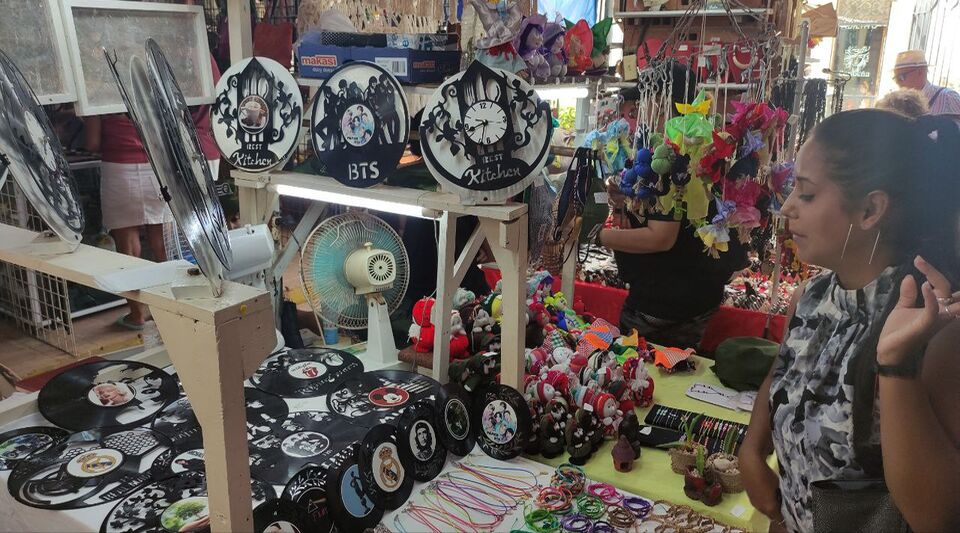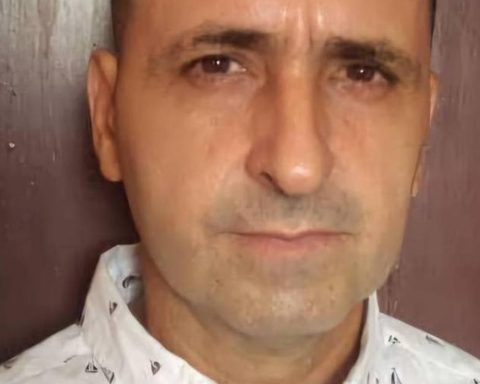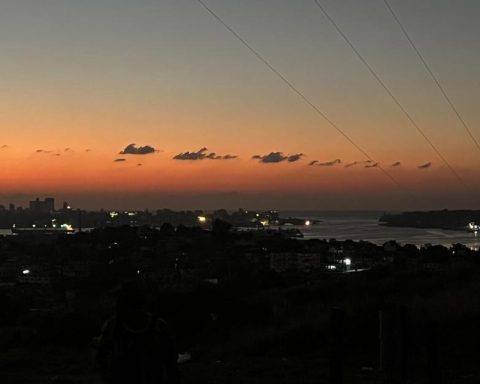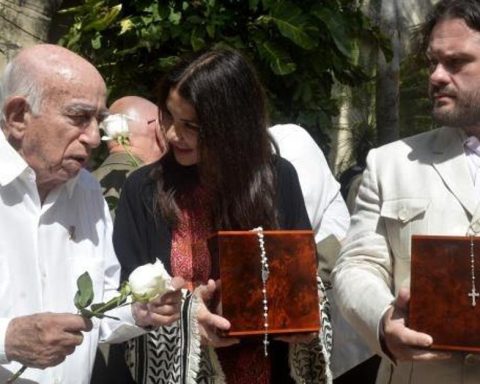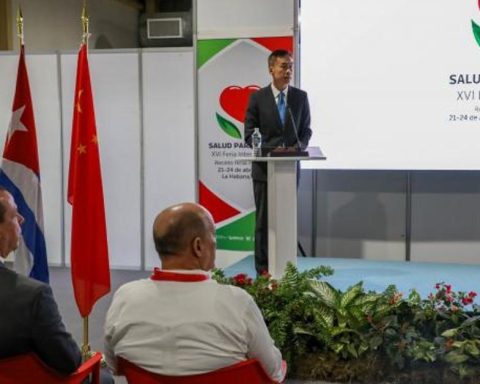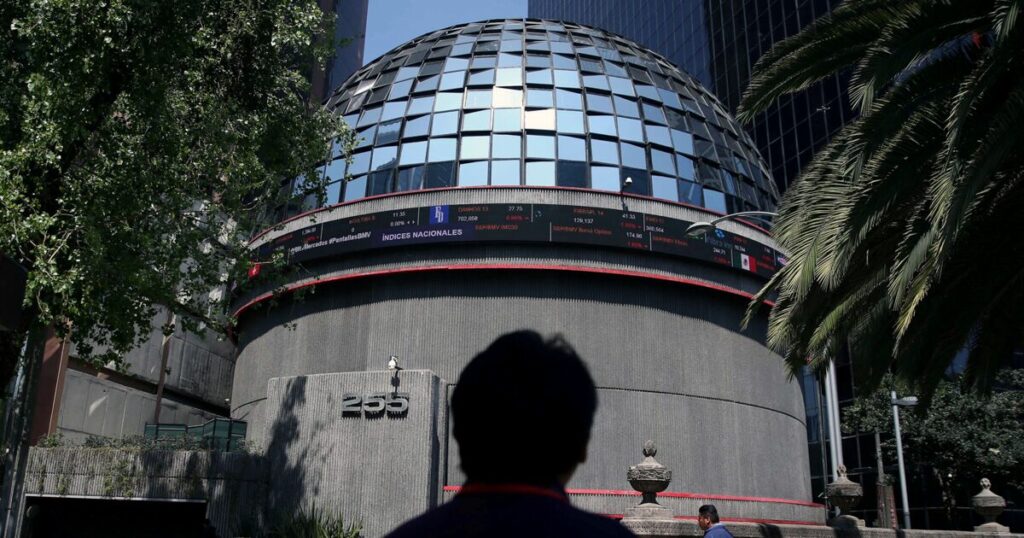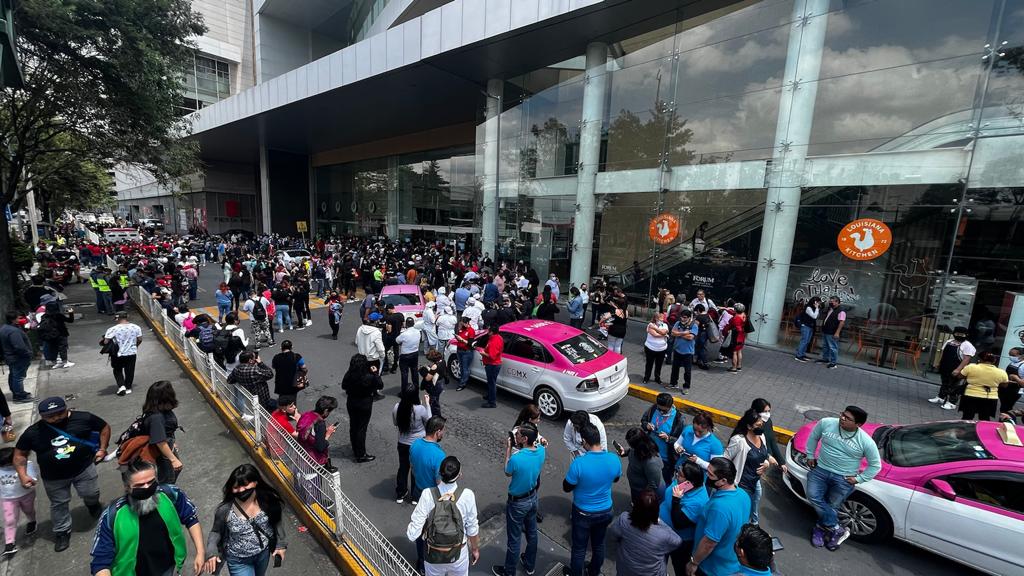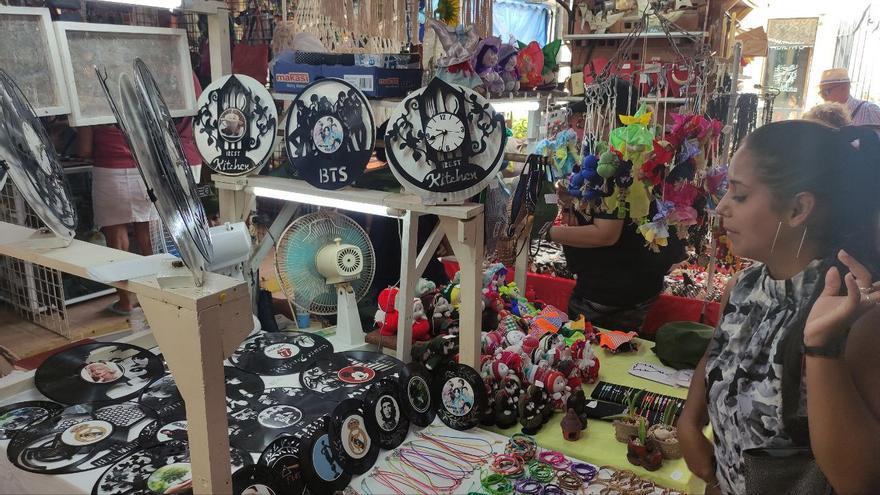
The berets with the face of Ernesto Che Guevara have been relegated to one corner of the table, while matchboxes, instant glue and cell phone accessories are displayed in the center. A few meters from the Plaza de la Catedral, in Old Havana, this point of sale of souvenirs has had to reinvent itself in the face of the drop in tourism in Cuba.
“Most of those who come now to buy something are Cubans, so we have had to recycle ourselves,” acknowledges Pedro Novo, 62, with more than two decades of experience as a crafts vendor in the capital’s historic center. Cuban. “Now I sell rattles, magnets to stick on the refrigerator but with themes that people like more here: soccer team emblems or photos of influencers.”
The objects most demanded by tourists have been somewhat relegated in the craft fairs that grew under the protection of the sites most visited by foreign travelers. In the central street 23 no longer beats the market with jewelry made from fruit seeds or pictures of old Chevrolets that used to attract many customers a few meters from the Habana Libre hotel.
“I now sell wooden kitchen spoons and forks more easily than a Capitol carving”
Now, an imitation of that market has been installed a little further in the park of Quijote but most of the merchandise is more focused on pleasing national demand than foreign taste. Leather sandals, decorative plates with floral motifs and small clay gifts complete most of the offerings, although the face of the Argentine guerrilla or an olive green cap with a red star still appears from time to time.
“What he sold the most about three years ago was wooden keys, small drums, sculptures of old men with hats and all those things that tourists like to take as souvenirs,” Randy, a young artist who graduated from the school, explains to this newspaper. San Alejandro in Havana and who supports his family by making wood carvings for various souvenir vendors.
“After the pandemic, we have had to reorient what we do because the Cuban buyer is not looking for the same things. Who is going to be interested in taking a woodcut that says ‘until victory always’ to decorate the living room of their house? To anyone who lives here,” he says. “I now sell wooden kitchen spoons and forks more easily than a Capitol carving.”
In the vicinity of the Plaza Vieja, a table built into a staircase also shows the haste of merchants to get rid of products they no longer sell. “Three for the price of one,” reads a small sign in front of a sculpture of a cigar that has Fidel Castro’s profile engraved on it. Some berets with the logo of the commander ranks are also up for auction for the price of 150 pesos each. The rest of the products on display are pet collars and mosquito repellent coils.
“People have also gotten tired of what was a novelty a few years ago. There is a lot of repetition and when something new comes out, all the other artisans copy it and copy it”
The most astute merchants get in tune with the times, with few foreign visitors and food shortages. Behind a counter where you can see earrings made from colored beads and pulses with the images of the zodiacal sign, a vendor on Obispo Street offers an assortment of “packages of frozen chicken quarters, sausages and clean fish fillets and without thorns”.
The offer, closer to that of a market than to a craft fair, only arrives when the client transmits confidence and stays long enough looking at the jewelry. To “complete” the purchase, just follow the merchant’s instructions: “I already told my contact and you just have to turn the corner and at the door painted blue you pay and take everything with you.”
Others appeal to the private restaurants and cafes closest to the Havana Bay area to display some of their merchandise on the walls to see if they can attract the interest of the few tourists who arrive. The strategy occasionally bears fruit and clients leave with a canvas that shows the Havanan Morro or the Giraldilla. It depends on how many cubalibres have been taken by then.
“It is a matter of time before this market recovers,” says Pedro Novo optimistically. “But we also learn from these crises because we had forgotten the Cuban client, we had focused a lot on foreigners and when tourism fell we realized that we had to produce more for the people here.”
However, the monetary issue can also be a hindrance. “Cubans pay in pesos, but the peso is worth less and less. What I want is for tourists to be able to pay me directly in dollars because my products are well made, they are beautiful and they will last for many years on the wall of their house or on a shelf.
“People have also gotten tired of what was new a few years ago. There is a lot of repetition and when something new comes out, all the other artisans copy it and copy it,” he laments. “We’re going to have to come out of this with other products or I’m going to spend the rest of my old age selling matchboxes and Spanish playing cards.”
________________________
Collaborate with our work:
The team of 14ymedio is committed to doing serious journalism that reflects the reality of deep Cuba. Thank you for joining us on this long road. We invite you to continue supporting us, but this time becoming a member of our newspaper. Together we can continue transforming journalism in Cuba.
